PFY market review in 2023
2023 is coming to an end and the followings are some key points noteworthy on PFY market: increasing production and sales, falling inventory and recovering profit.
PFY capacity is expanded substantially in 2023, which was mainly because the startup of some new units in 2022 was postponed. According to the data from CCFGroup, new PFY capacity was around 4.86 million tons/year in 2023, with growth rate at 10.2%. Around 1.01 million tons/year of capacity was eliminated, down by 2.1%. By the end of 2023, the effective PFY capacity would approach 51.68 million tons/year, with net growth rate of capacity at around 8%.
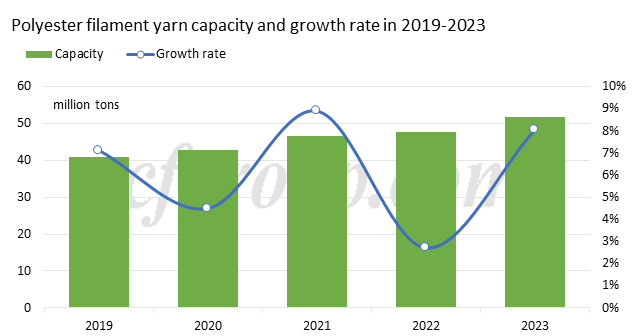
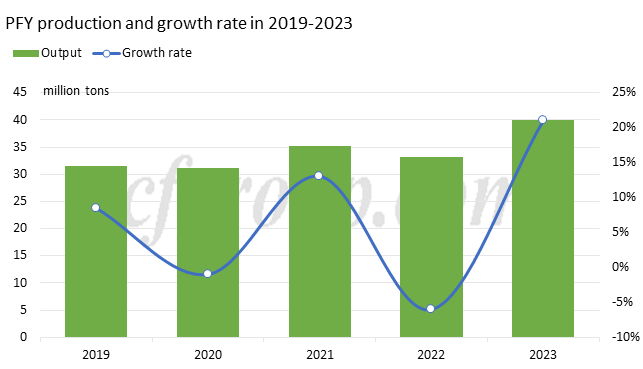
At the same time, the growth rate of PFY output also exceeded expectations. In 2023, PFY plants kept running at high capacity, which sustained at 80% or above in March and afterward. The run rate in September-December was higher than the same period of 2018-2022. As a result, the growth rate of PFY production exceeded expectations in 2023. According to preliminary statistics, PFY production increased by about 6.8 million tons to 39.9 million tons (an increase of 21%). As for demand, the increase in exports made a big contribution. The growth rate of PFY exports was at 24.16% in January-November, 2023. Export to the trading partners like India, Turkey, Egypt, Indonesia and South Korea saw a big increase.
It is preliminarily estimated that the growth rate of PFY exports and apparent demand will both exceed 20% in 2023.
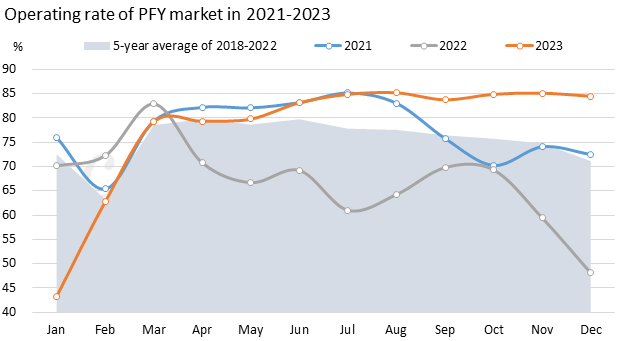
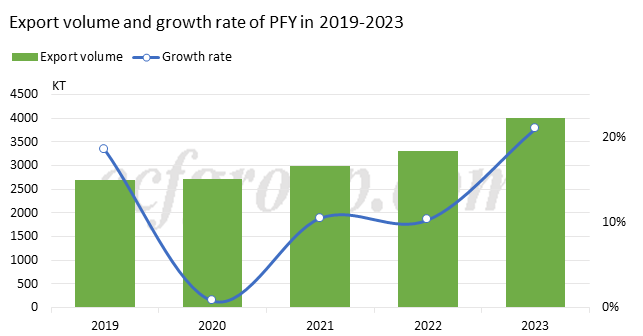
Direct-spun PFY producers were active in controlling run rate to control stocks since the fourth quarter of 2022. At the beginning of 2023, the direct-spun PFY plants had low inventory burden. The inventory of POY and FDY fell to 10-20 days compared with 15-35 days in 2021-2022, but higher than 0-20 days in 2018-2020.
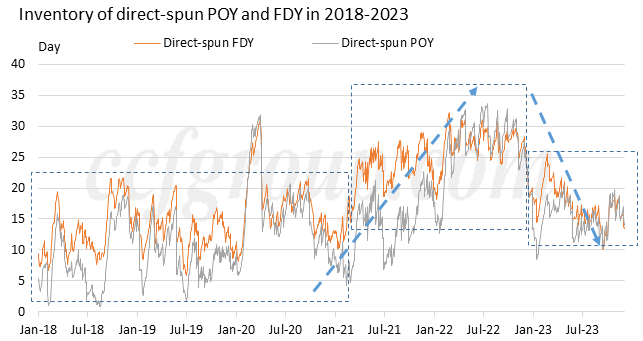
Meanwhile, the fluctuation of polymerization cost and PFY price was less in 2023 compared with previous two years. Downstream buyers showed moderate buying interest. The PFY stocks of downstream plants was mainly around 10 days in 2023. The comprehensive inventory of PFY was basically around 25-30 days in 2023, lower than last year at 35-45 days.
Supply and demand both grew. The inventory burden was modest. The cash flow of PFY plants improved over last year in 2023, mainly POY and FDY. The cash flow of DTY sustained. PFY producers were profitable on the whole. The proportion of eliminated capacity was high but that of new capacity was small on FDY market. The recovery of cash flow of conventional FDY150D was far better than that of POY150D in 2023.
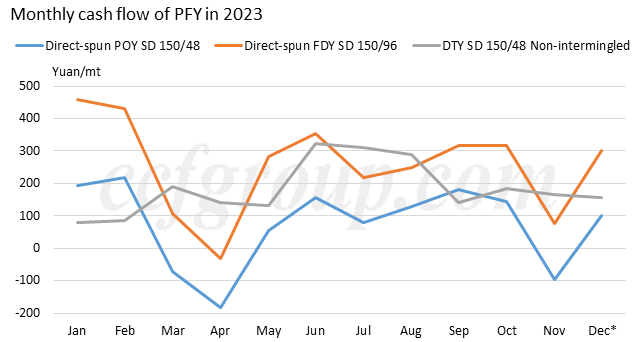
After experiencing capacity expansion peak in 2023, the launch of new PFY capacity is expected to be low in the following years. New direct-spun PFY capacity is expected to be 1.16 million tons/year in 2024. Some projects are under planning in 2025 and afterward, but confirmed projects are not many by now. Meanwhile, the capacity of some small-and-medium sized companies is eliminated actively and some shift to produce differential goods.
As for demand, domestic demand for textiles and apparels is expected to see falling growth rate in 2024 and the foreign trade may recover structurally. The economic growth of domestic demand and the increase in household income are favorable, and the pressure is still concentrated on the suppression of home textile demand from real estate sector. Compared with the retaliatory recovery after the epidemic in 2023, the growth rate is expected to decline in 2024. In terms of domestic demand for PFY, except for growing consumption of textiles and apparels, eyes are suggested to the substitute advantage of PFY to other fibers--cost performance and technical performance improvement.
In the overseas sector, there is an end to the destocking of textile and clothing in Europe and the United States, and foreign trade is expected to pick up moderately around the middle of the year, but the degree of recovery will be restricted by the weak global economy and demand, as well as the suppression of competition from Southeast Asia, South Asia and other countries. As for direct export of PFY, the growth rate is estimated to be slower. On one hand, there are new PFY capacity outside China; on the other hand, the rush of export may not appear as 2023 impacted by the BIS certification of India.
In general, supply and demand pattern of PFY market is likely to keep improving in 2024 and the prosperity of PFY market may moderately increase. However, the final will depend on the growth of demand in 2024. With high production and capacity in 2023, the competition on PFY market may remain strong in 2024. The increment of output and the recovery of benefit are the places where the factory needs to make a certain choice.
- Top keywords
- Cotton Price
- Cotton Futures Price
- Cotton Futures
- CZCE
- PTA Futures Price
- Chemical Fiber
- Polyester Prices
- Wool price
- PTA Futures
- Shengze Silk
- China
- Yarn Price
- price
- China Textile City
- Fibre Price
- Benzene Price
- Cotton
- Index
- Cotton Index
- PTA
- fabric price
- NYMEX
- Top 10
- textile industry
- Spot Cotton
- Cotton Yarn
- Polyester Price
- Futures
- PTA Price
- cotton yarn price

